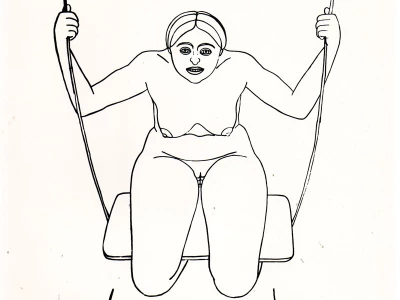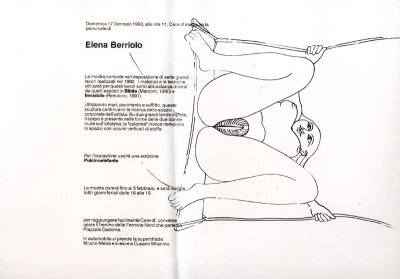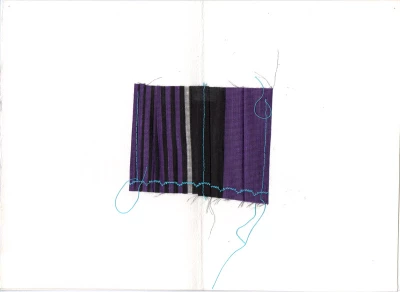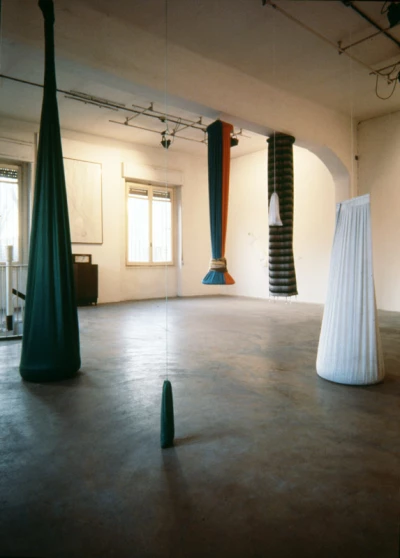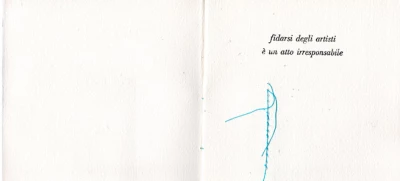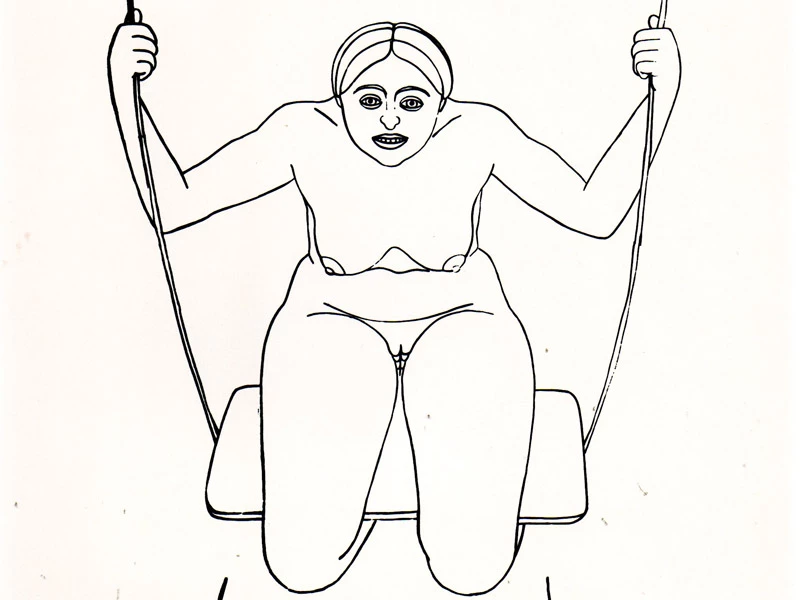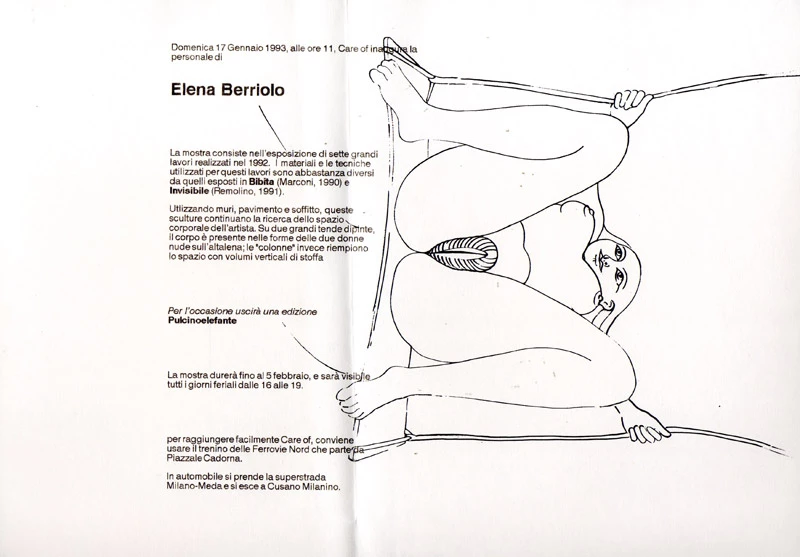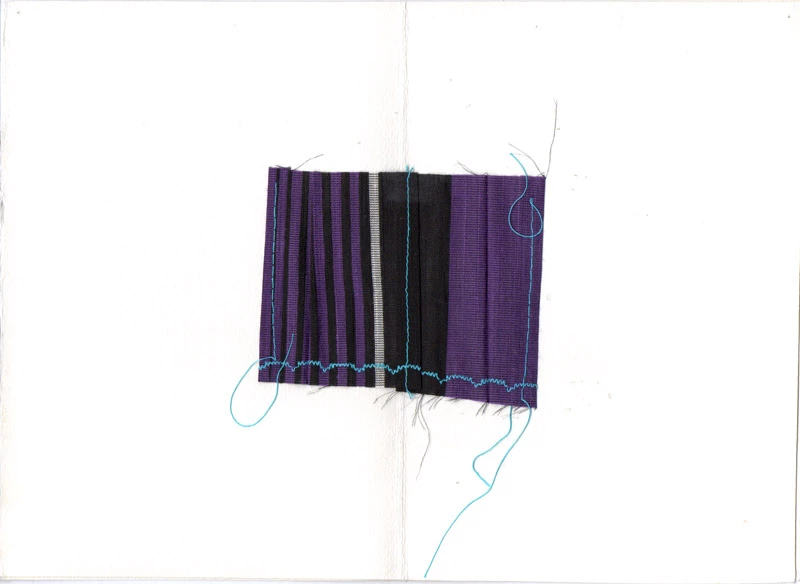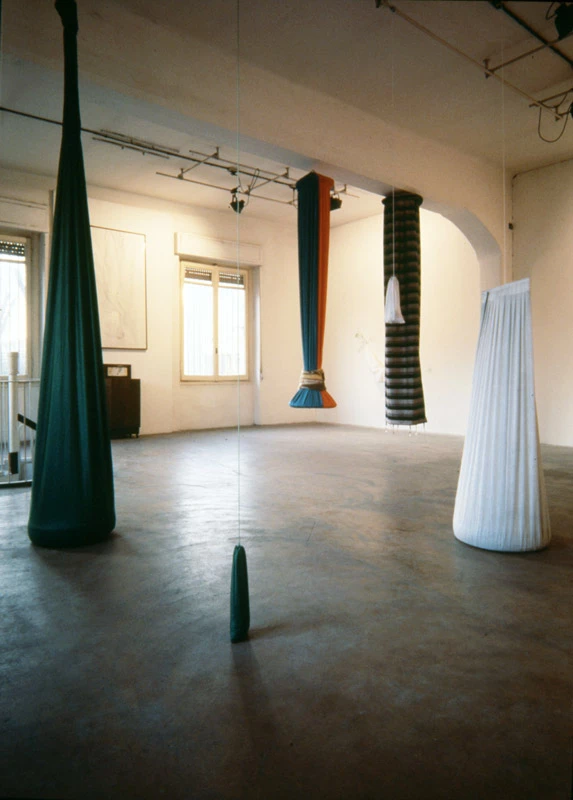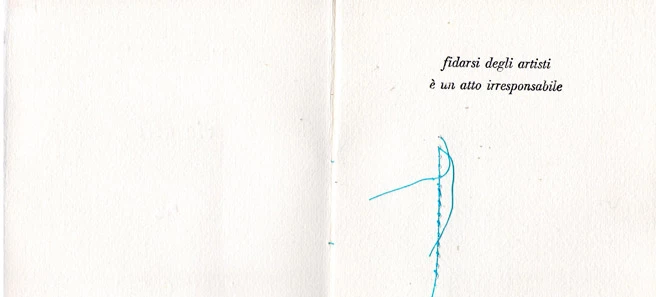Elena Berriolo
17.01.1993 - 05.02.1993
The strange thing is not that a work like the one presented by Elena Berriolo at Careof is unusual for a female artist—after all, in the 1970s many women had already considered themselves and their bodies as a site for aesthetic intervention (just think of Gina Pane or Marina Abramović)—but the shock comes from the fact that until now Elena Berriolo, a diviner-like and highly androgynous artist, perhaps even masculine in her almost engineering-like installations, where intellect and technological devices were deeply integrated and employed, now presents this large female body on a fabric set up like a curtain (a very feminine element in itself) beside other closed curtains resembling suspended tukul, which can be raised and lowered just like Venetian blinds.
And, as if that weren’t enough, this female silhouette displays a prominent, conspicuous sex, sharply outlined between open legs in a near-gynecological pose—were it not for the jarring romantic note of the swing on which it rests.
It is impossible not to recall the primitive bodies of certain mythical women, like the Venus figurines of the Mesolithic, the statuettes of Willendorf or Laussel dating back some 30,000 years. After works like Invisibile—based entirely on the conversion of magnetic waves into sound impulses, where the so-called viewer of the 1960s (now dubbed “Observer”) enters through various physical effects—and Bibita, a kind of dialogue between virtual and real painting, an installation like this produces an evident sense of disorientation.
It’s as if to say: back then, in the Mesolithic era, woman as life-giver and the house-tent were the only virtual laws in existence—the first from which all else followed—so today we may be sophisticated and post-human, and that is not something to be ashamed of. On the contrary, it is the primal story that a female artist has the duty to tell. The artist who is no longer ashamed to be a woman.
Maria Grazia Torri
